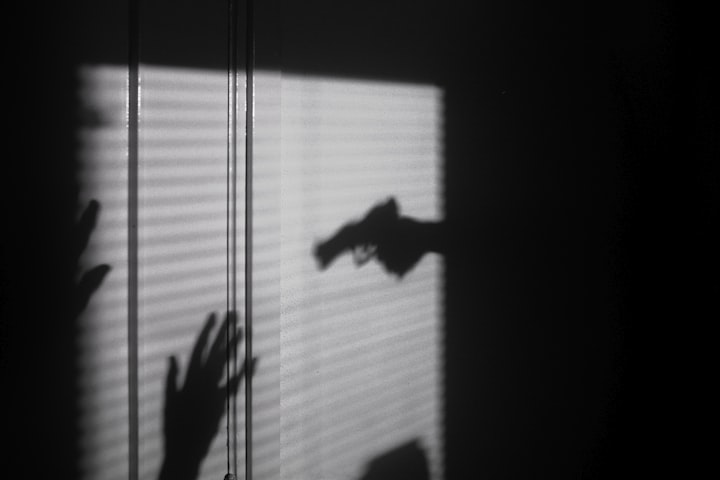11 Facts About Hate Crime in America Most People Don't Know
Hate crime is often brushed under the rug. This article will reveal disturbing facts about hate crime in America's neighborhoods, cities, and school systems.

I remember the first time I heard about hate crime happening in my neighborhood. It was a simple, stupid piece of graffiti that had a racist remark on it; nothing violent, per se. However, it was disturbing. I never thought my small town would be a place where people would hate one another so deeply.
Simple as it was, it shook me to my core. It was so terrifying realizing that this happens everywhere—and sadly, that was my first foray into hate crime in America.
The more I learned about hate crime, the more I realized this wasn't just a "one-off" problem or just "a few bad eggs." It was systemic. Don't believe it? Take a look at these terrifying facts about hate crimes throughout the country.
It shouldn't come as surprise that most incidents involving hate crimes are racially motivated. In 2016, around 56 percent of all reported hate crimes were racially motivated. African Americans faced the highest number of hate crimes, followed by Native Americans, followed by mixed race people.
Of crimes that weren't committed based on race, the remaining hate crime statistics went as follows: 21 percent were based off sexual orientation, 20 percent based on religion, 12 percent dealt with nationality bias, and another 1 percent dealt with disability bias.
Most hate crime isn't violent, but is meant to intimidate.
Though watching movies may make you think otherwise, most hate crimes aren't violent. Rather, they are meant to provoke violence or threaten the targeted person. It's their way of dehumanizing people.
Only one-third of official claims of hate crime are violent offenses. The other two-thirds are seen as provoking violence, intimidating victims, or otherwise causing distress.
Most television shows display hate crimes in the USA in a "white person versus black person" situation, but real hate crime is rarely that simple. Hate crime can be seen in a variety of different situations including having black perpetrators hit white victims, straight individuals harming LGBTQ victims, or having Christians rail against Muslims.
Hate crime facts show that around 46 percent of all hate crimes are caused by white people. The next most likely perpetrators of hate crime are people of African American descent.
Most hate crime culprits are way younger than you think.
The typical age range for people who commit hate crimes is from 15 to 24 years old. This is because most people who commit forms of hate crimes in this country are very young, impressionable, and have learned hate from others.
The 15 to 24 age range accounts for half of all hate crimes committed in the United States. From then on, the numbers continue to decline as age increases.
It goes without saying that hate crimes are a significant problem in America today. Around 6,000 cases are reported every year. What most people don'tknow about the issue is how under-reported it is.
Around 3,000 different police forces refuse to report hate crime as part of their policy. Many other police groups will cover up hate crime as a way to increase property values. The FBI relies on police reports to determine how extensive hate crime is.
So, we really don't know how widespread the issue is.
The term "hate crime" varies from state to state.
41 states currently have statewide hate crime laws on books. Many states will have extra provisions that offer specific groups of people who otherwise wouldn't have protective extra cushioning against the discrimination they may face.
As politics becomes increasingly money-oriented, socioeconomic statuses are beginning to become hate crime material. States have responded by legislating accordingly.
For example, in Florida, the definition of "hate crime" expands to crimes against the homeless. In California, being a union member makes you part of a protected class.
The biggest problem with hate crime is how hard it is to prove in the court of law. In order for a hate crime to be verified by the courts, you have to prove that the attack was provoked due to hatred for a specific, protected class.
So, while the behavior in Charlottesville was pretty easy to prove, something along the lines of a white person shooting a Muslim person in a parking lot might not have enough evidence to be prosecuted for an anti-Muslim hate crime.
There's a direct correlation between Trump's presidency and hate crime in America.
If you thought that President Trump's rise to power didn't have any effects on crime rate, you're wrong. Studies have shown that hate crimes have risen by as much as 30 percent in some parts of the country as a direct result of Trump being elected president.
Criminologists believe that it's because bigots feel emboldened by Trump's bigotry and feel it's now "safe" to commit racially-motivated crimes. Perhaps it's Trump derangement syndrome?
There's a reason why high-income areas always seem to be devoid of hate crime. Studies have shown that living in a low-income area is directly linked to hate crime. The reasons why, though, seems to vary.
Many people believe that hate crime is caused by seeing a particular group as a threat to one's economic well-being. However, it's also likely that a reduction in law enforcement could make it easier for people to harm hate crime victims, creating a multi-pronged problem.
To date, it's uncertain why the link between poverty and hate crime exists. Either way, no one can figure out why poor areas have a higher incidence of hate crime. Strange, right?
Though it's serious business, you aren't very likely to get prosecuted for a hate crime.
Though many hate crimes are reported, only 13 percent of those reported crimes will actually be pursued by federal prosecutors. On a state level, the reports are much worse. Only 4 percent of reported hate crimes will lead to an arrest by state prosecutors.
More than 50 percent of all crimes that are denied an investigation end up being declined due to a lack of evidence.
Before we finish off this article, let's break down the hate, shall we? According to studies performed by the FBI, hate crimes happen for one of four reasons:
- Thrill-Seeking. When this form of hate crime happens, it's usually young men who want to be able to say they beat up someone or did something that made them feel tough. Attackers who do this may think society will applaud them, or just not care about the victims. 70 percent of the hate crimes that turn violent are done by thrill-seekers.
- Perceived Defense. These attackers claim to act out as a way to defend their neighborhoods from people who they feel are a threat. Allen Andrade's horrific hate crime is an example of this.
- Retaliation. Retaliatory offenses happen when an attacker feels slighted by a perceived attack perpetrated by an entire race, gender, or sexual orientation. They lash out at their targets as a way to retaliate. Elliot Rodger was an example of a retaliation killer.
- Mission. These are very rare attackers, but they still happen. For these people, they feel it's their mission to eliminate entire portions of society. They feel the world is rigged against them, and that they have the right to retaliate as they see fit. They will go for as high amounts of carnage as possible, simply because they live to see others suffer.
About the Creator
Skunk Uzeki
Skunk Uzeki is an androgynous pothead and a hard partier. When they aren't drinking and causing trouble, they're writing articles about the fun times they have.






Comments
There are no comments for this story
Be the first to respond and start the conversation.